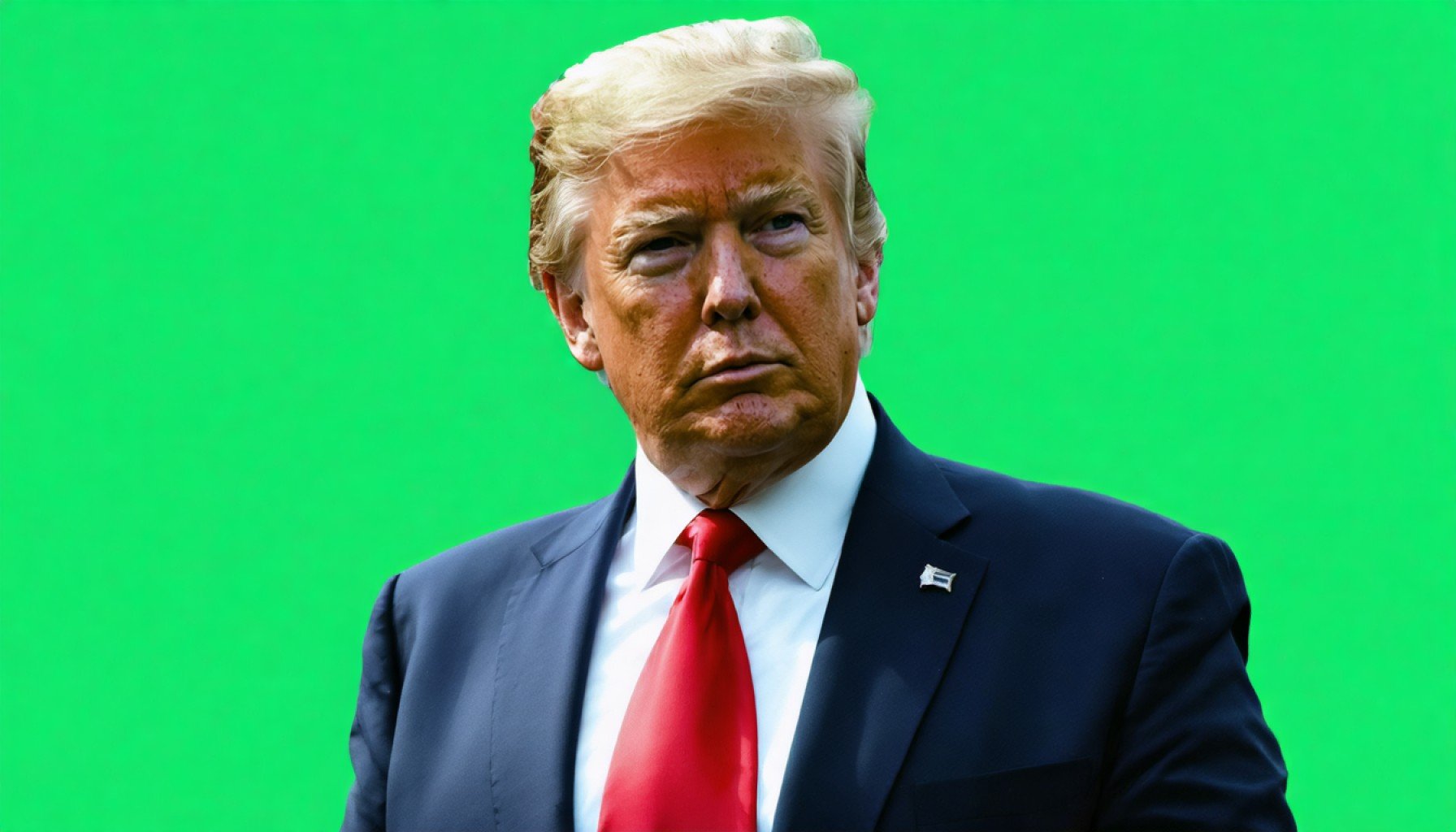- Artificial intelligence is projected to contribute $15.7 trillion to the global economy.
- President Trump’s proposed tariffs could significantly impact the tech sector, especially companies reliant on foreign semiconductors.
- The proposed tariffs target foreign tech giants, like Taiwan Semiconductor, to encourage relocation to the U.S.
- Potential tariffs may disrupt companies like Nvidia, heavily dependent on Taiwan’s chip technologies and Asian market sales.
- Trade policy shifts risk affecting prices in various sectors, including semiconductors, automobiles, and pharmaceuticals.
- Market optimism is vulnerable to geopolitical dynamics, illustrating the volatile intersection of technology and politics.
- Trump’s tariff strategy underscores the impact of political rhetoric on economic landscapes and investor sentiment.
In the high-octane world of Wall Street, a forceful tug-of-war plays out as the allure of artificial intelligence battles against looming political moves. With the AI sector poised to deliver an eye-popping $15.7 trillion to the global economy, as per PwC, no one could foresee the impact of a solitary remark from President Trump being so formidable.
Within the chambers of his Mar-a-Lago estate, President Trump vocalized his intentions to lay bare his strategy for semiconductor companies: replace federal incentives with crippling tariffs. He intimated that a 25% levy, escalating potentially to 100%, would serve as the ultimatum for foreign tech giants such as Taiwan Semiconductor to relocate operations to American soil.
However, this tough rhetoric, while intended to spark domestic manufacturing, could throttle AI’s market fervor. Companies like Nvidia that have climbed the crest of AI’s wave could face turbulent waters. Their reliance on Taiwan’s innovative chip technologies, coupled with vital sales to Asian markets, means Trump’s still-gesturing pen could cut deep into their gains.
Yet, the storm doesn’t simply engulf tech behemoths. If tariffs take aim at sectors like semiconductors, automobiles, and pharmaceuticals, the cascading effect could hammer consumer prices and prick the ballooning optimism fueling market rallies.
The narrative is vivid and poses a stark takeaway: While AI heralds an era of transformation, political machinations can swiftly alter the trajectory, reminding investors of the inherent volatility in the marriage of technology and geopolitics. Trump’s tariffs are not just taxes—they’re a testament to the power of words to rewrite economic scripts. As history has shown, what rises with unchecked momentum can just as swiftly falter amidst strategic uncertainty. The AI revolution, it seems, must brace for impact.
The Unexpected Twist: How AI’s Meteoric Rise Faces a Political Crossroad
How Political Decisions Could Reshape the AI and Semiconductor Industry
The intersection of artificial intelligence and geopolitics is creating a seismic shift, with potential repercussions across the global economy. Wall Street is witnessing a unique confluence where advanced technologies like AI are desiring exponential growth while facing formidable political challenges. Here’s a detailed exploration of the various factors that underpin this intriguing drama and their implications.
How-To: Navigating the Impact on Semiconductor Reliance
1. Understand the Supply Chain: Semiconductor manufacturing is highly concentrated in regions like Taiwan. Companies need to assess their supply chains and potentially diversify to mitigate risks.
2. Evaluate Tariff Implications: Calculate potential cost increases due to tariffs on components sourced from affected regions and consider passing these costs to consumers or finding cost-efficient alternatives.
3. Invest in Domestic Alternatives: Explore options for investing in or partnering with emerging domestic semiconductor firms to reduce exposure to geopolitical risks.
Real-World Use Cases and Industry Trends
1. AI in Manufacturing: AI continues to revolutionize sectors such as manufacturing through automation and predictive maintenance. However, geopolitical tensions can affect supply chain stability, emphasizing the need for innovative solutions within AI applications.
2. Financial Services: AI’s ability to predict market trends is powerful, but political maneuvers introduce unpredictability, prompting firms to develop AI systems that account for sudden policy shifts.
Market Forecasts and Industry Trends
– AI Economic Impact: With AI poised to add $15.7 trillion to the global economy (PwC), its potential is immense, provided companies can navigate geopolitical disruptions.
– Future Semiconductor Growth: The semiconductor market is projected to grow at a CAGR of 4-5% up to 2030. Understanding market shifts due to tariffs can guide strategic planning and investment.
Reviews and Comparisons
– Nvidia vs. Competitors: As Nvidia’s reliance on Chinese markets poses certain risks, compare how it stacks up against AMD or Intel, who might have diversified supply chains.
– Chips Act: Evaluate the effectiveness of similar legislative propositions like the CHIPS for America Act which are designed to bolster domestic semiconductor production.
Controversies and Limitations
1. Economic Nationalism vs. Globalization: The drive to relocate manufacturing could increase costs and disrupt established markets.
2. Environmental Impact: Shifting production locations may counteract efforts towards sustainable practices, given the carbon footprint associated with establishing new facilities.
Actionable Recommendations and Quick Tips
– Diversify Manufacturing Sources: Companies should consider spreading their production across multiple countries to minimize risk.
– Invest in AI Predictive Tools: Use AI to simulate various geopolitical scenarios to prepare for potential market disruptions.
– Stay Informed: Regularly monitor policy changes and market responses to quickly adapt strategies.
– Collaborate with Policymakers: Maintain an ongoing dialogue with regulators to better influence favorable policy outcomes.
Conclusion
While the dawn of AI signifies a monumental leap forward, savvy businesses must navigate the intricate dance between innovation and politics. Companies like Nvidia face complex challenges, underscoring an essential narrative in today’s world: the interplay of technology and geopolitics dictates a dynamic yet volatile market landscape.
For more on the latest in AI and its geopolitical implications, stay informed with industry resources such as PwC.
















